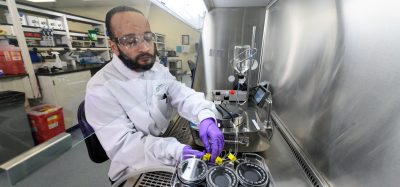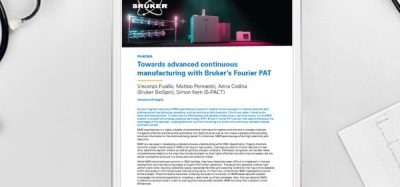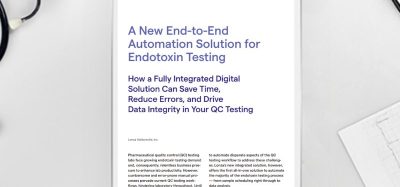The changing landscape of automation in pre-clinical drug discovery
Posted: 22 February 2010 | Dr Sheraz Gul, Vice President and Head of Biology, European ScreeningPort, Hamburg | No comments yet
Over the past decade we have seen a significant realignment of activities associated with drug discovery and this will continue for a multitude of reasons. Within the pharmaceutical industry we have seen significant changes e.g. a decrease in the numbers of drugs that are being approved by the regulatory authorities and the looming expiration of patented drugs, both of which have an immediate and direct consequence on revenue streams. In light of these issues, the pharmaceutical industry is responding appropriately. These changes have included a re-assessment of the strategies being employed in the pre-clinical phase of drug discovery, some of which are discussed in relation to automation solutions.
Over the past decade we have seen a significant realignment of activities associated with drug discovery and this will continue for a multitude of reasons. Within the pharmaceutical industry we have seen significant changes e.g. a decrease in the numbers of drugs that are being approved by the regulatory authorities and the looming expiration of patented drugs, both of which have an immediate and direct consequence on revenue streams. In light of these issues, the pharmaceutical industry is responding appropriately. These changes have included a re-assessment of the strategies being employed in the pre-clinical phase of drug discovery, some of which are discussed in relation to automation solutions.
Over the past decade we have seen a significant realignment of activities associated with drug discovery and this will continue for a multitude of reasons. Within the pharmaceutical industry we have seen significant changes e.g. a decrease in the numbers of drugs that are being approved by the regulatory authorities and the looming expiration of patented drugs, both of which have an immediate and direct consequence on revenue streams. In light of these issues, the pharmaceutical industry is responding appropriately. These changes have included a re-assessment of the strategies being employed in the pre-clinical phase of drug discovery, some of which are discussed in relation to automation solutions.
The pre-clinical phase of drug discovery is well known to be a lengthy and high risk process, taking up to five years to progress a program from the gene-to-Candidate stage. Upon successful delivery of a Candidate molecule which enters the clinical phase, a further five years can be expended in various clinical phases and it is only during these that the safety and efficacy of a molecule is established. The pre-clinical phase itself has various stages and this article focuses on how its landscape is changing with regards to automation within the pharmaceutical industry and beyond. With the completion of the sequencing of the human genome and the subsequent identification of the genes and the proteins they encode, it was thought, somewhat naively that marrying up the gene products with potent, selective molecules would be sufficient to yield drugs of the future. In an effort to see this materialise, significant resources have been invested in the cloning, expression and purification of soluble protein targets. In many cases, due to complications in preparing full length proteins, they are expressed and purified as truncates or containing tags to aid purification. In the case of membrane bound proteins, cell lines over-expressing the target for whole cell based assays as well as preparing membrane fragments for use in binding assays are made. In addition to these advances in biological reagent preparation methodologies, we have seen advances in combinatorial chemistry such that small molecule libraries composed of a large number (10,000 – 1,000,000) are synthesised relatively rapidly. These libraries, typically stored in solutions of DMSO at an appropriate concentration require a significant investment with respect to suitable storage and informatics provision. There is also the overhead associated with transferring these compounds to plates for testing in assays.
A widely employed assay methodology in the Pharmaceutical industry to discovery starting points for drug discovery involves High Throughput Screening (HTS) in microtitre plates containing 96, 384 or 1536 wells per plate. A pre-requisite for embarking on a HTS campaign is the successful development of an assay in a microtitre plate based format in which compounds from the small molecule library can be evaluated relatively rapidly. These tasks are usually labour intensive and highly repetitive and suitable automation solutions are required to ensure that the valuable time of individuals is not taken up by such tasks as well as to ensure that they can be performed in an error-free manner. In order to ensure adequate throughput, an obvious choice is to introduce appropriate automation. However, what we have seen in the Pharmaceutical industry is the relentless automation of processes, in many cases to an extent where the quality of assays has been compromised so as to ensure they are compatible with the automation. The results of such endeavours have been numerous technical successes, but the quality of such outputs, which should be the true measure of success fall well short of the mark. Thus, careful evaluation is required before deciding on any choice of automation. It is essential to ensure that reliable, robust and well conceived designs are implemented when considering automation solutions for screening activities. In addition, they need to be flexible for the challenging environments that are commonplace as there are diverse types of assays being employed in drug discovery. As there are numerous suppliers of automation solutions, particular attention needs to be paid when selecting suitable platforms that will be rolled out across many sites.
A wise investment in appropriate automation technologies, although not cheap, will in the long run pay for themselves. However, if the automation is inappropriate, it will only hasten the inevitable demise of projects and strategies. Although the metrics of processes will improve when automating them, this will not be of any use if the end result is the failure to deliver a suitable molecule for progression in drug discovery. It was not long ago that it was considered that the best purchase is a fully automated solution, usually at vast expense, to allow processes to be fully automated and be capable of operating on a 24-7 basis. These levels of automation in drug discovery are unnecessary. Biological phenomena are complex and although during assay development parameters are determined to ensure reproducibility, when they are transferred from one laboratory or site to another, they may behave in a sufficiently different manner where they need close attention. This is a particularly common issue that is observed when changing equipment and although measures are usually taken to ensure assays function appropriately on a particular liquid handler e.g. by the addition of detergents to avoid adsorption of biological components to the inner surface of tubing, altering the type of liquid handler with tubing made of a different material, adsorption properties may alter assay performance significantly. As a result, some assays may only perform well on a specific type of equipment. Therefore the need to purchase equipment for all possible eventualities is entirely unrealistic as well as extremely expensive. An alternative is to have a modular automation platform which allows it to be more flexible, versatile and easier to use. These types of systems also allow for semi manual operations and are usually sufficient for most assays. In this type of format, microtitre plates can be prepared in bulk and loaded into a stacker manually and the dispensing of reagents can be performed using automated technologies. The assay plates can be removed from the destination stacker after reagents have been dispensed and loaded into another dispensing system for addition of the next reagent. Most assays involve one or two of such bulk additions to initiate reactions. After a fixed period of time a third addition may be necessary to allow the detection of the effect of test compounds on the function of the target of interest.
In addition to the Pharmaceutical industry being involved in drug discovery, it is now also becoming established within academia and many of the technologies that are being employed here are based on technologies that are adopted within the Pharmaceutical industry. The strategies employed within the academic organisations are often ahead of those in the Pharmaceutical industry and are probably reflected by the multidisciplinary skill sets they possess internally and are a welcome change. The academic screening centres essentially act as service providers on behalf of internal groups of disease biology experts, prosecuting programs by way of providing screening and profiling services. With their more limited budgets they are more prudent when establishing automation solutions.








